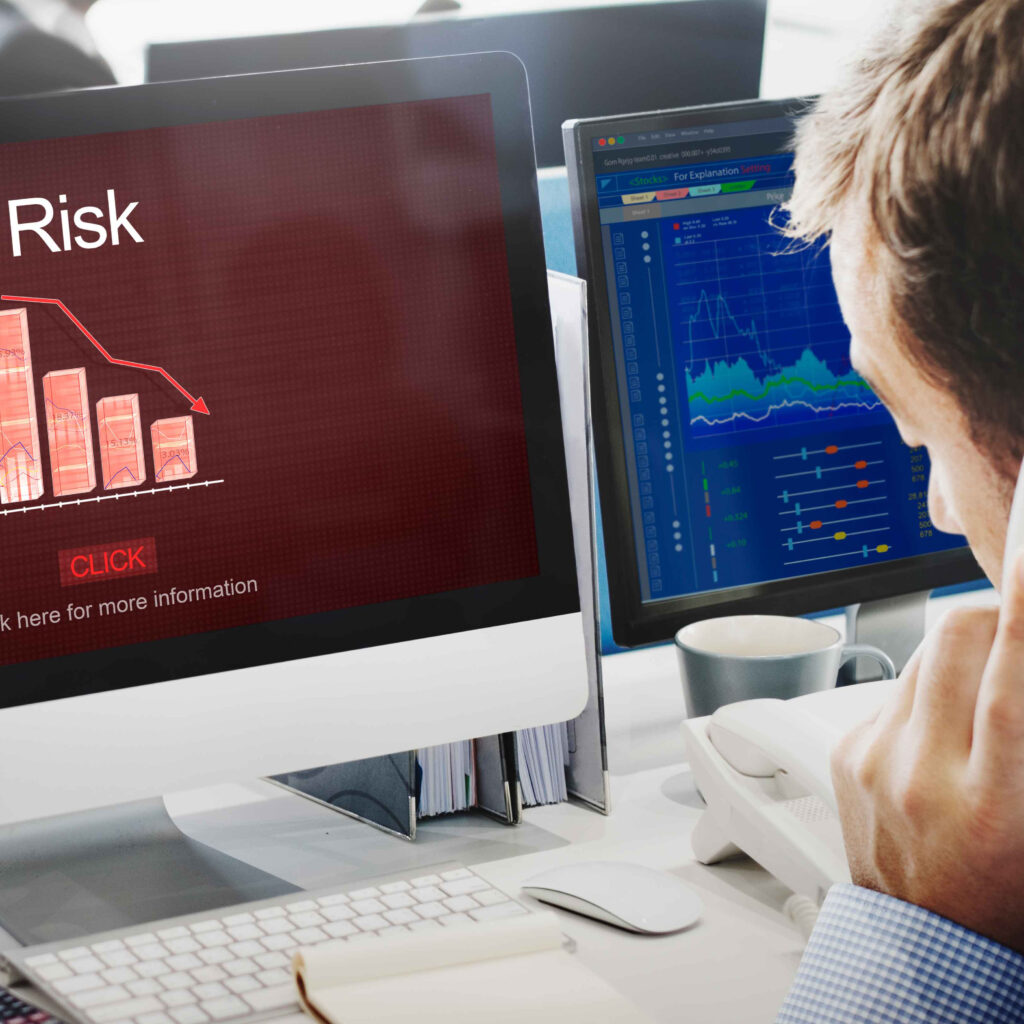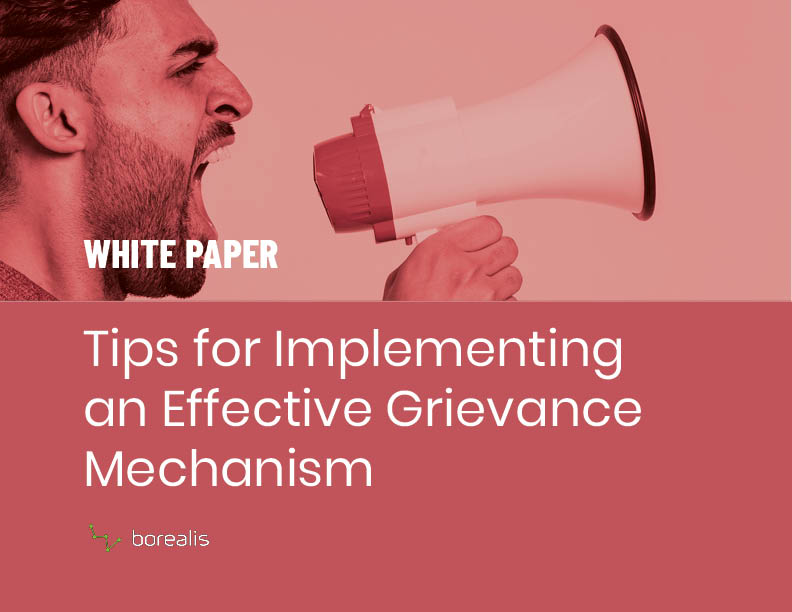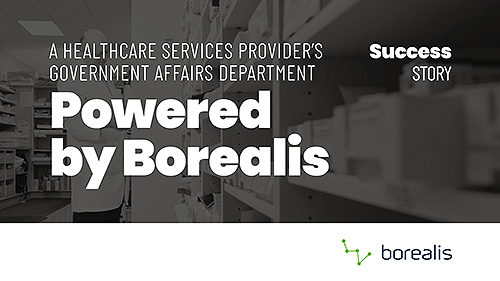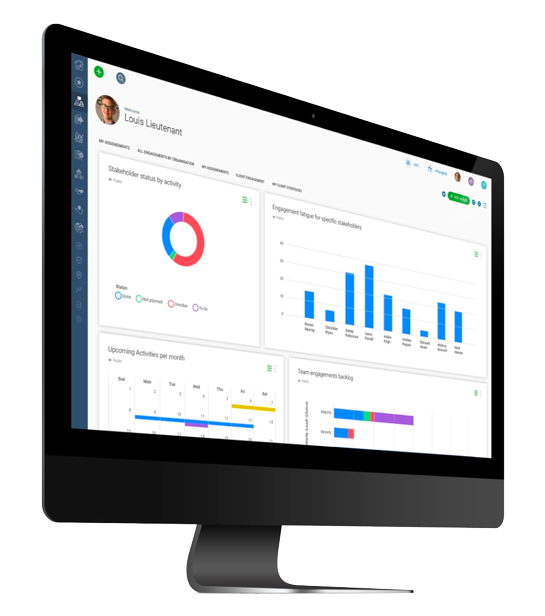Stakeholder capitalism has witnessed a marked rise recently. This has been largely driven by a growing awareness of environmental issues, growing global inequality, and a sense of collective vulnerability triggered by COVID—a simple virus that singlehandedly wreaked havoc on global business activities for several financial quarters.
In light of this growing awareness, businesses are now much less inclined to view stakeholder engagement as an “optional” investment. Gone are the days of downplaying stakeholder influence on the success—or failure—of projects and business activities. If anything, stakeholder influence is on the rise.
Organizations that implement a stakeholder management system face a major challenge, however, the question still lingers, how to measure stakeholder engagement effectively?
What is stakeholder engagement and why measure it?
Stakeholder engagement refers to actively involving and considering the interests of various parties beyond just shareholders in organizational decision-making processes. This includes employees, suppliers, customers, partners, and society at large. Measuring stakeholder engagement is essential because it ensures that a company’s strategies and actions align with the needs and expectations of all relevant stakeholders, not just shareholders.
A study from Harvard Business Review suggests that prioritizing stakeholders’ interests over immediate profits can lead to better long-term financial performance. By engaging stakeholders, companies can foster greater workforce engagement, which ultimately contributes to superior financial results. Therefore, measuring stakeholder engagement allows companies to gauge how effectively they are involving and satisfying these diverse groups, which can directly impact their overall success and sustainability.
Definition and significance of stakeholder engagement
Stakeholder engagement entails the active involvement of individuals who could be impacted by an organization’s decisions or could shape their implementation. These individuals might either endorse or dissent from the decisions, wield influence either within the organization or its surrounding community, hold pertinent official roles, or stand to be affected over the long term.
Stakeholder engagement is fundamentally a practice devoid of moral judgment. It constitutes a dynamic process characterized by interactive exchanges, mutual respect, dialogue, and the potential for transformative change, rather than a one-sided approach to managing stakeholders.
The benefits of measuring stakeholder engagement for organizational performance
There are many benefits of measuring stakeholder engagement effectively for organizations. Here are 5 key benefits.
To build trust and relationships

Interacting with stakeholders, from customers to investors, nurtures trust and cultivates strong bonds. Businesses, by integrating stakeholders into decisions and valuing their input, showcase transparency and accountability. These foster enduring partnerships and elevates the organization’s standing, bolstering its reputation for integrity and collaboration.
To improve engagement strategies

The data collected on stakeholders provides valuable insights that can guide the company toward the best engagement strategies to put in place, based on the unique characteristics of specific stakeholders or stakeholder groups.
To comply with regulations

Large-scale projects such as those in oil & gas and renewables are subject to innumerable laws and regulations. Knowing how to measure stakeholder engagement is therefore a must. Energy companies are required to report to the government bodies that monitor them, particularly on issues like social acceptance.
To optimize the allocation of resources

Having meaningful data on shifts in stakeholder sentiment lets you measure the success of initiatives and ensure your investments are being directed in the right places.
To manage risk and issues

Proactive stakeholder engagement aids in preempting and tackling potential risks, issues, and concerns before they spiral into crises. Consistent communication allows businesses to spot emerging challenges, gather early indicators, and enact precautionary strategies. Furthermore, it furnishes a venue for addressing grievances, resolving conflicts, and curtailing reputational harm through transparent dialogue.
KPIs are vital metrics that measure organizational performance against specific objectives, guiding strategic decisions and highlighting areas for improvement. They provide actionable insights into key aspects of business operations, driving accountability and facilitating continuous growth. Above we talked about setting clear performance indicators for successfully engaging with your stakeholders. Now let’s look at some specific stakeholder engagement KPI examples.
Key metrics for measuring stakeholder engagement
Exploring stakeholder metrics offers crucial insights into project dynamics. Assessing engagement level, satisfaction score, influence impact, and engagement ROI provides a comprehensive understanding of stakeholder involvement, satisfaction, influence, and the effectiveness of engagement efforts.
1. Engagement Level
This metric provides a snapshot of stakeholder involvement and dedication to the project. It assesses the frequency and quality of interactions, participation in meetings, task completion, and alignment with project objectives. A high engagement level suggests active stakeholder participation, enthusiasm, and commitment, which bodes well for project success.
2. Satisfaction score
Measuring stakeholder satisfaction gauges their overall contentment with project outcomes and processes. It involves gathering feedback on various aspects such as project deliverables, communication clarity, responsiveness of project management, and perceived value of project outputs. A high satisfaction score indicates that stakeholders are pleased with the project’s progress and results, fostering positive relationships and long-term collaboration.
This metric evaluates the extent of stakeholder influence on project outcomes and their reciprocal impact. It considers factors like stakeholder power, interest, and engagement levels. Understanding stakeholders’ influence helps project managers anticipate challenges, align strategies, and cultivate mutually beneficial partnerships.
4. Engagement ROI
By quantifying the ROI, return on investment, of stakeholder engagement efforts, this metric enables project managers to assess the effectiveness of their engagement strategies. It involves comparing the costs incurred in engaging stakeholders with the benefits derived, such as risk mitigation, issue resolution, and opportunities identified. A high engagement ROI indicates that the resources invested in stakeholder engagement yield significant benefits, underscoring the importance of effective engagement practices in project management.
Methods for measuring the impact of stakeholder engagement
on organizational performance
When analyzing how to measure stakeholder engagement effectively, a number of factors can make it challenging:
- The intangible nature of some of the information gathered (favourable or hostile feelings toward the project)
- The number and variety of points of contact between the organization and its stakeholders
- The fact that information is often kept in silos
Or so it might seem. With the right tools and knowledge, you can easily measure stakeholder engagement and gain incredibly valuable insights.
The first step is to put in place a rigorous evaluation system that involves the regular measurement and accurate recording of results, such as in a dashboard, for example. This information will let you identify trends and adjust course if needed.
You also need to ensure that data of all types is easily accessible to everyone concerned. This is the only way to ensure that everyone who needs to be informed remains fully up to date on a dossier’s progress—regardless of who was in the discussion or meeting (or who carried out a given activity) with one or more stakeholders.
Next, you have to determine your performance indicators (KPIs). To do that, you need to ask the right questions:
- What is the purpose of these indicators? Who or what are they intended for? What decisions should they inform?
- What is the nature of the desired information? Is it to evaluate processes or outcomes? To highlight the positive or the negative?
- What resources are available to measure these indicators? Do we have sufficient time, money, expertise, tools, etc.?
Your answers to these questions must lead to clear and precise objectives which will serve as your reference points, and to the definition of observable and quantifiable indicators.
Another aspect to keep in mind is the fact that a Community Relations Manager and a VP of Public Affairs do not face the same challenges. How they measure stakeholder engagement efforts, the types of indicators they need and how they will implement them will differ based on the targeted stakeholder groups.
How these methods impact organizational performance
Implementing rigorous evaluation systems and maintaining accessible data enhances organizational transparency and agility, crucial for staying responsive in dynamic environments. By regularly measuring and recording results, organizations can swiftly identify emerging trends and adapt strategies accordingly. This proactive approach mitigates risks and capitalizes on opportunities, ultimately bolstering organizational resilience.
Clear performance indicators play a pivotal role in guiding actions and ensuring alignment with strategic objectives. They provide a tangible framework for assessing progress and holding stakeholders accountable for their contributions. Additionally, by posing pertinent questions during the indicator development process, organizations can ensure that the chosen metrics effectively address key concerns and facilitate informed decision-making. Tailoring measurement approaches to different roles and stakeholder groups acknowledges the diverse needs and priorities within the organization. This targeted approach fosters deeper engagement and cultivates stronger relationships with stakeholders, thereby enhancing trust and collaboration. Moreover, by customizing strategies to specific audiences, organizations can maximize the impact of their engagement efforts and optimize resource allocation.
Overall, these methods for measuring the impact of stakeholder engagement on organizational performance not only enable organizations to effectively gauge stakeholder engagement but also contribute to broader organizational performance. By fostering a culture of continuous improvement and strategic adaptation, these practices position organizations for long-term success in a rapidly evolving landscape.
Stakeholder engagement KPI examples
KPIs are vital metrics that measure organizational performance against specific objectives, guiding strategic decisions and highlighting areas for improvement. They provide actionable insights into key aspects of business operations, driving accountability and facilitating continuous growth. Above we talked about setting clear performance indicators for successfully engaging with your stakeholders. Now let’s look at some specific stakeholder engagement KPI examples.
Specific stakeholder KPI Examples
1. Stakeholder Satisfaction Score
This KPI involves gathering feedback from stakeholders through various channels such as surveys, feedback forms, or direct interviews. The data collected allows the organization to gauge stakeholders’ perceptions of the organization’s performance, responsiveness, and effectiveness in meeting their needs and expectations. By tracking satisfaction scores over time, the organization can identify areas for improvement and make targeted adjustments to its engagement strategies.
2. Stakeholder Engagement Levels
This KPI measures the quantity and quality of interactions between the organization and its stakeholders. It encompasses various forms of engagement, including meetings, events, communications, and collaborations. By tracking engagement levels, organizations can assess the depth of relationships with stakeholders and identify patterns in communication and participation. This KPI helps ensure that engagement efforts are consistent, proactive, and tailored to the needs of different stakeholder groups.
3. Stakeholder Retention Rate
This KPI evaluates the percentage of stakeholders who continue to engage with the organization over time. It reflects the organization’s ability to cultivate long-term relationships and maintain stakeholder loyalty. A high retention rate indicates that stakeholders perceive value in their interactions with the organization and are motivated to remain engaged. Conversely, a declining retention rate may signal dissatisfaction or disengagement, prompting the organization to reassess its engagement strategies and address any underlying issues.
NPS is a widely used metric that assesses stakeholder loyalty and advocacy by asking stakeholders how likely they are to recommend the organization to others. Based on their responses, stakeholders are categorized as promoters, passives, or detractors. The NPS is calculated by subtracting the percentage of detractors from the percentage of promoters, resulting in a score that indicates overall stakeholder sentiment. A high NPS suggests strong stakeholder advocacy and positive word-of-mouth, while a low NPS may indicate areas for improvement in stakeholder engagement and satisfaction.
5. Stakeholder Influence Impact
This KPI measures the extent to which stakeholders’ opinions, feedback, and actions influence organizational decisions and outcomes. It involves tracking instances where stakeholder input directly contributes to changes in policies, projects, or strategic initiatives. By assessing the impact of stakeholder influence, organizations can demonstrate the value of engagement efforts and ensure that stakeholder perspectives are adequately considered in decision-making processes. This KPI also helps foster trust and collaboration with stakeholders by recognizing their contributions and demonstrating responsiveness to their concerns.
Ready to see how our solution can help you define and track these indicators?
Integrating stakeholder engagement metrics into organizational strategyt
Previously we discussed the 4 key stakeholder metrics for measuring stakeholder engagement. After identifying, integrating these metrics into organizational strategy becomes paramount. Integrating stakeholder metrics into broader organizational strategies involves leveraging the insights gleaned from these metrics to drive decision-making, enhance relationships, and maximize project outcomes.
Engagement Level serves as a pulse check on stakeholders’ commitment and involvement in the project. By analyzing engagement data, organizations can identify key stakeholders who are actively contributing and those who may require additional support or attention. This information can be sourced from tracking the number of meetings held with different stakeholders, conducting feedback surveys for decision making outcomes, developing a collaboration index that records joint initiatives and shared resources, and developing a sense of ownership in the minds of stakeholders for the project.
Satisfaction Score provides valuable feedback on stakeholders’ perceptions of the project, highlighting areas of strength and areas needing improvement. Organizations can use this data to tailor project processes, communications, and deliverables to better meet stakeholders’ expectations and enhance satisfaction. Organizations can employ NPS, Net Promoter Score, that quantifies the level of satisfaction and measures the likelihood of stakeholders recommending an organization’s product or brand to other people.
Influence Impact analysis helps organizations understand the dynamics of stakeholder relationships and power dynamics within the project environment. To identify stakeholder influence effectively organizations can consider developing influence index that asses stakeholder’s influence on factors based on access to total resources, decision making power in the community, legal prowess and so forth.
Engagement ROI assessment allows organizations to evaluate the effectiveness of their investment in stakeholder engagement activities. By quantifying the tangible benefits derived from engagement efforts, through measuring response time, tracking grievance and issues, incorporating feedback mechanisms and recording the reach and number of stakeholders engaged, organizations can justify ongoing investment in stakeholder engagement and prioritize resources where they will have the greatest impact.
Overall, integrating stakeholder metrics into broader organizational strategies requires a proactive and data-driven approach, leveraging insights to optimize stakeholder relationships, mitigate risks, and maximize project success.

Grievances should never escalate into conflicts. Download our white paper on how to handle grievances.
Borealis’ approach to stakeholder engagement and data management
Borealis software for stakeholder management is more than just a powerful tool for organizing data stemming from your engagement activities. Its user-friendly reporting features also make it easy to take comparative measurements.
When faced with the question of how to measure stakeholder engagement effectively, Borealis helps you determine the right engagement strategies for various stakeholder groups. It also flags emerging problems and helps you reduce response times. It facilitates accountability and makes it much easier to monitor the myriad of factors involved in the sound and controlled management of stakeholders.
4 key takeaways for using the software
- All stakeholder engagement plans should include a rigorous evaluation process.
- This evaluation exercise can be difficult, but it’s essential because what gets measured gets improved.
- Quantifiable indicators must be linked to specific objectives.
- The reporting functions in Borealis software simplify all aspects of stakeholder engagement, including measuring the success of these effort.
Borealis’ approach to stakeholder engagement and data management is comprehensive and forward-thinking. Leveraging our cloud-based platform, collaboration tools, and reporting analytics, Borealis enables organizations to centralize data, track concerns, and automate manual tasks efficiently. With features like visual mapping, we empower teams to manage complex relationships and accurately gauge community concerns. Additionally, our global view, bolstered by 20 years of maturity, ensures a robust understanding of diverse stakeholder landscapes. Borealis prioritizes user experience with an intuitive interface, ready-to-use dashboards, and multilingual training. Moreover, our commitment to continuous improvement is evident through regular upgrades, AI-driven analysis, and adherence to the highest security standards. Backed by a dedicated team of customer service executives and having assisted over 400 teams, Borealis provides a scalable, integrated solution for effective stakeholder engagement and data management.
Get started with
Borealis stakeholder engagement software today!
Case studies and success stories

Explore how Yamana Gold navigated stakeholder engagement challenges in Quebec’s mining industry. Delve into their approach to building social acceptance and developing trust-based relationships with local populations while adhering toenvironmental regulations.

Discover how Enel Green Power Mexico enhanced information management and collaboration along with breaking down silos with Borealis stakeholder engagement software.
Challenges in measuring stakeholder engagement
While this blog provides a comprehensive guide for effectively measuring stakeholder engagement, there are still some common challenges and pitfalls present that may complicate the task at hand.
Here are three broad challenges that arise when measuring stakeholder engagement.
Stakeholder engagement involves capturing qualitative data such as perceptions, opinions, and feelings, which can be subjective and challenging to quantify. Interpreting and analyzing this data accurately can be complex, leading to inconsistencies in measurement.
Diversity of Stakeholder
Stakeholders come from diverse backgrounds, perspectives, and interests, making it difficult to develop standardized metrics that effectively capture the varying degrees and types of engagement. Tailoring measurement approaches to different stakeholder groups while maintaining consistency can be challenging.
Access to Information
Gathering comprehensive data on stakeholder engagement requires access to multiple sources of information, including direct interactions, surveys, social media, and feedback channels. Consolidating and integrating data from these disparate sources can be challenging, particularly when dealing with large and geographically dispersed stakeholder populations. Stakeholder engagement softwares streamlines data collection by centralizing information from diverse sources, enhancing analysis and decision-making processes. Its integrated platform fosters efficient communication and engagement strategies across large and dispersed stakeholder networks, optimizing organizational responsiveness.






